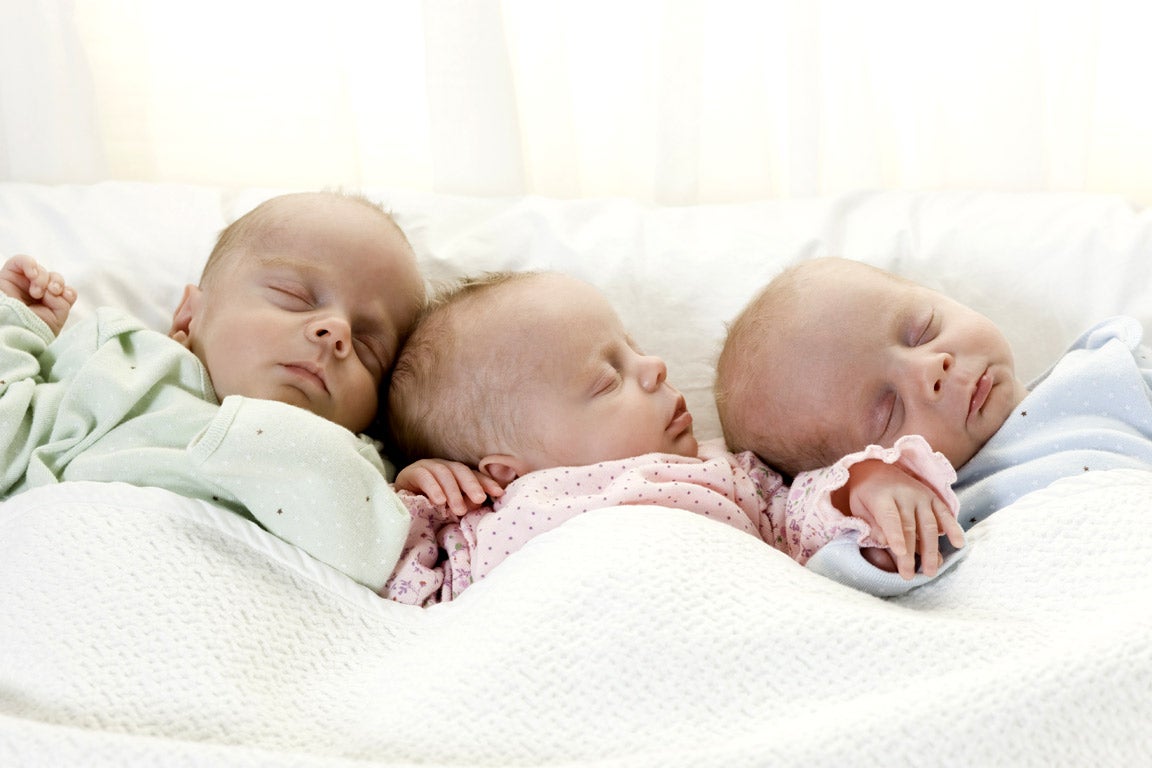Limits lifted on number of twins and triplets born through IVF
Clinics will no longer have to ensure that multiple births account for less than 10% of successes

Limits on the number of twins and triplets that can be born as a result of IVF treatment have been lifted, following warnings from fertility experts that they harmed some women’s chances of becoming pregnant.
The Human Fertilisation and Embryology Authority (HFEA) announced that IVF clinics will no longer have to ensure as a condition of their licence that multiple births account for only 10 per cent of their successful cases.
Multiple births are more risky and twins and triplets have a higher risk of disability. They can occur from IVF treatment when women are implanted with more than one embryo – a technique which improves their chances of becoming pregnant.
Last month the HFEA lost a High Court battle against two clinics which argued that the decision on how many embryos to implant should be taken on medical grounds and not based on a clinic’s concerns over breaching targets.
Mohamed Taranissi, medical director of the Assisted Gynaecology Centre, who led the legal challenge, said that patients who would benefit from having more than one embryo implanted – often older women, or those who had already had a failed course of IVF – were being told they could only have one embryo.
Lisa Jardine, chair of the HFEA, said it was “simply not appropriate” for two out of 83 clinics not be subject to the restrictions, adding that they would now be lifted to create “a level playing field” for clinicians.
The HFEA still backs 10 per cent limits on multiple births and said it expected clinics to continue to make efforts to bring rates down.
Dr Taranissi told The Independent that the profession backed efforts to reduce the number of multiple births, but said treatment decisions for women should be made on a case-by-case basis.
“A patient can come to you in January or February and you can use three embryos if standard practice dictates that for this patient. If this same patient comes to you in August or September, when you’ve already reached your annual limit, then you are going to treat them differently – that cannot be right,” he said.
In a joint statement, the Association of Clinical Embryologists, the British Fertility Society, The Multiple Births Foundation and the Royal College of Obstetricians and Gynaecologists said they believed “responsible professionals will continue do all they can to minimize multiple births through good clinical practice.”
Subscribe to Independent Premium to bookmark this article
Want to bookmark your favourite articles and stories to read or reference later? Start your Independent Premium subscription today.

Join our commenting forum
Join thought-provoking conversations, follow other Independent readers and see their replies